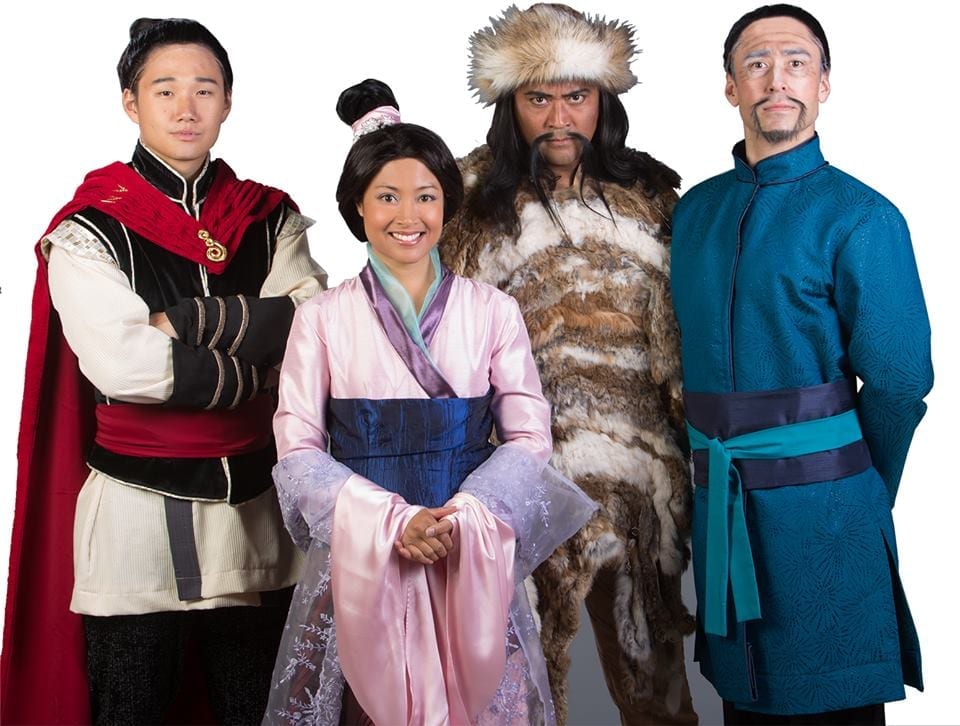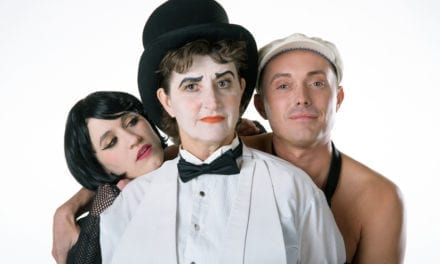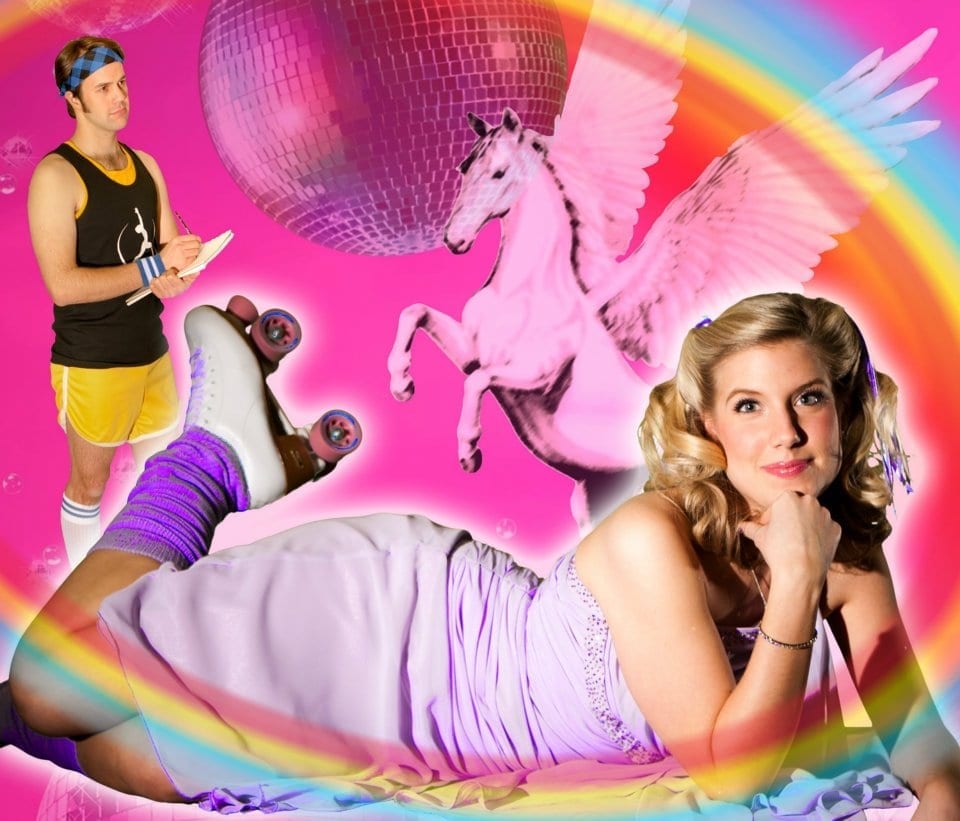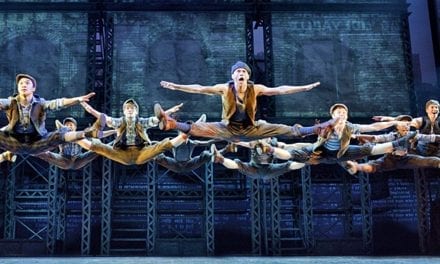IVINS — Disney’s Mulan, with music and lyrics by Matthew Wilder and David Zippel, Stephen Schwartz, Jeanine Tesori and Alexa Junge, and a book adaptation from the animated film of the same name by Patricia Cotter, has taken the form of a stage adaptation in a 75-minute production presented without an intermission. Disney previously released a Disney Jr. version of this musical available through licensing to children’s theatre organizations; however this was the world premiere of this main stage adaptation.
Mulan is set in ancient China and is a retelling of the old Chinese folktale about the story of a young Chinese maiden who learns that her weakened and lame father is to be called up into the army in order to fight the invading Huns. Knowing that he would never survive the rigors of war in his state, Mulan, a tomboy that struggles to fit into the customs of the time, decides to disguise herself as a man and join in his place. Unknown to her, her ancestors are aware of this and to prevent it, they order a tiny disgraced dragon, Mushu, to join her in order to force her to abandon her plan. He agrees, but when Mushu meets Mulan, he learns that she cannot be dissuaded and so decides to help her in her quest instead.
Stylistically I was very confused with this adaptation because the artistic staff couldn’t really decide if the show was a children’s theatre piece or an attempt to become Disney’s newest blockbuster musical (such as The Lion King, Beauty and the Beast, or Mary Poppins) or remain part of the Children’s Jr. musical theatre cannon. If this was intended to be a dry run for a huge musical (like last year’s Aladdin) then the show’s fatal flaw is the fact that a 75-minute musical with a writing style geared very specifically towards children audiences greatly failed to have any crossover appeal to adults. I do not know what specific changes were made from Mulan Jr. to this version, but the writing seemed very much what I would expect to see in The Little Mermaid Jr. or The Jungle Book Jr., not a full blown musical aimed at adult audiences. Because the entire musical was presented in 75 minutes the initial difficulty is that there just isn’t enough time to create a complex or detailed story, develop characters, perform show stopping numbers and add dimension and shaping to the many scenes. As such, the show seemed to rush from scene to scene and present a very surface and flat replication of the film, rather than creating real people with dimension and emotions. Consequently, the audience never got a chance to get to know any of the characters very well, and the characters served basically as props to support the storyline, rather than be the major focus of the plot. Despite some good acting by many of the principal characters, there was simply not enough in Cotter’s script to work with or time given to create realistic or believable characters, and the actors were forced to quickly embrace the stereotype and move on to the next scene.
Another convention that Disney’s latest shows seem to embrace is the idea of adding a narrator type of character that comments throughout the show on the action that was just seen. I suppose this was done to sort of break the fourth wall and keep the audience involved in the story. I first noticed this convention appear last year in Tuachan’s Aladdin where a band of three comedians would joke and comment on each scene between scenes or scene changes. In Mulan, this commenting character/narrator was created in the form of a puppet dragon named Mushu. I frankly did not like this convention in Aladdin, nor did I like it in Mulan. It added nothing to the production, and frequently pulled me out of the story and gave a rather choppy feel to the play. Eliminating Mushu’s role as a narrator and commentator would be first change I would recommend in a revision of the book. I assume that this is a children’s theatre technique to cater towards children and insure they are following the storyline. However, if Mulan is truly aimed at breaking out of children’s theater to encompass a full spectrum of audience members, this has to go because it made the show very juvenile in nature.
Although they were forced by Cotter’s script to rush through their scenes, the actors were talented and committed to their parts. Less attention was given in creating realism or believable choices on stage (most noticeable in some of the less than dramatic fight scenes that were performed in a more “tongue and cheek” style). Mulan (Jennifer Hubilla) had the perfect look for the part and acted the part well showing vulnerability, comedy and commitment to her character. She had a nice voice, although her vibrato seemed forced, more like a tremolo than a true vibrato, causing sustained notes to go sharp, most notably in her ballad “Reflection.” Daniel J Edwards as Captain Shang gave the strongest performance of the evening, with his cut physique and a powerful voice that really shined in “I’ll Make a Man Out of You.” The three misfit soldiers: Ling (Chester Lockhart), Yao (Anthony Obnial), and Qian-Po (Chris Bona) had excellent comedic timing and added some fun moments during such songs as “A Girl Worth Fighting For,” and interacted with one other well in their attempts at becoming brave warriors. The ending scene with Mulan and her father (John Haggerty) was also especially tender and poignant, and one of the few moments of real emotion when characters were more than flat caricatures.
The choreography by Veronica Yeager was superbly done and executed by the talented cast and ensemble of dancers. It furthered the plot and really added to the spectacle of the show, such as in “I’ll Make a Man Out of You.” The scenic design (Wesley Hamblin) and lighting design (Josh Scott) were also expertly crafted and created nice contrasts and pictures in many of the group scenes. Hamblin and Scott also worked together well to captured the time period and style of the show. Mulan was generally well directed by Ryan Norton (given the quality of the script), however, I would have liked to see Norton find ways in the show more emotional depth. I would have liked to have seen on stage real people with human needs and emotions which would have made the characters less exaggerated and cartoonish and more human and relatable.
In summation, this is the perfect show to bring children to, ages 12 and under. Running slightly over an hour, the fast pace and spectacle nature, plus lowbrow humor will keep them entertained and keep their attention. However, teen and adult audiences will find the writing very childish and find it hard to get engrossed in the storyline. I found this show to be more similar to many of the shows in the Walt Disney theme parks than a professional Broadway musical. I enjoyed my evening in the same way I enjoy watching all the Disney shows when I visit Disneyland. However, Mulan does not even begin to compare to any of Disney’s big Broadway hits, and I do not see this one gaining much traction outside the children’s theatre cannon.







